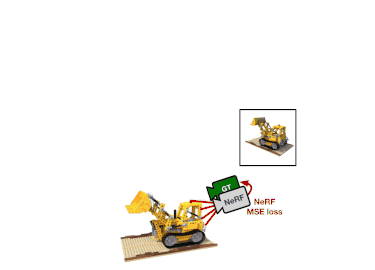Related publications

Putting NeRF on a Diet: Semantically Consistent Few-Shot View Synthesis
Ajay Jain, Matthew Tancik, Pieter Abbeel ICCV 2021 International Conference on Computer Vision
DietNeRF regularizes Neural Radiance Fields with a CLIP-based loss to improve 3D reconstruction. Given only a few images of an object or scene, we reconstruct its 3D structure & render novel views using prior knowledge contained in large image encoders.

Mip-NeRF: A Multiscale Representation for Anti-Aliasing Neural Radiance Fields
Jonathan T. Barron, Ben Mildenhall, Matthew Tancik, Peter Hedman, Ricardo Martin-Brualla, Pratul Srinivasan ICCV 2021 International Conference on Computer Vision
NeRF is aliased, but we can anti-alias it by casting cones and prefiltering the positional encoding function. Dream Fields combine mip-NeRF's integrated positional encoding with Fourier features.